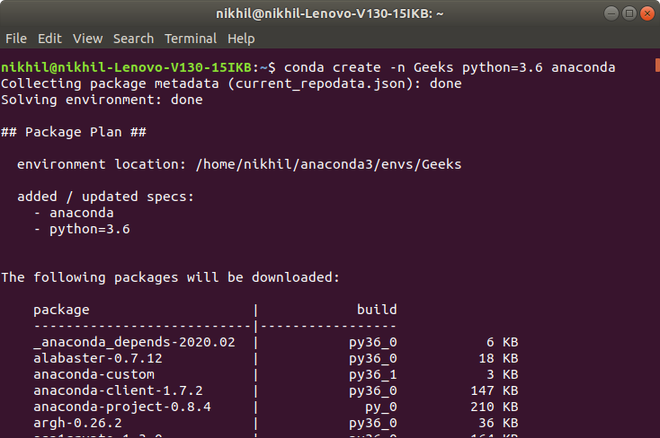

Some libraries may have conflicting requirements (for example, a library needs Python 3.6 while other legacy unmaintained library still needs Python 2.7) and can be installed in different virtual environments.Ī virtual environment is just an isolated installation of Python and its libraries. For example, one virtual environment for every project, or a virtual environment for every application you want to run isolated from the rest of your system (Jupyter, Apache Airflow, etc.). You can create as many virtual environments as you need. Install and uninstall libraries, and if something breaks, you can just delete the environment and create it again without risk. You can experiment with them without fear. Typical usages for virtual environments are: In that case, virtual environments are also your best friend. Now imagine that you want to install the latest version of Apache Airflow (a Python library for orchestrating workflows) using Python version 3.8, but your system runs Python 3.7. If during the process of installing libraries (like pandas or scikit-learn) System Python breaks (and believe me, shit happens), the probabilities of being in trouble (complicated fix / fresh OS install) are high, that's one of the reasons virtual environments exist and are so popular. That's the reason we want to preserve this Python installation clean and working perfectly.

For example, if you open a file explorer, it may use System Python under the hood to list files and folders. This Python installation is called System Python, and it means that this executable is used by our Operating System to do many things. Python is just an executable binary in our system. If you get a better understanding of virtual environments we have accomplished our goal.Īs you can see, the output of this command says that Python is already installed in our system, specifically in the location /usr/bin/python3. The goal of this post is to end this madness once for all. You would be surprised how many excellent professionals, even with 5+ years of experience still struggle with chaotic, corrupted, and barely usable Python installations because of that.
#CONDA INSTALL PACKAGE INTO A SPECIFIC ENVIRONMENT FULL#
We also tried other alternatives and always go back to conda because it is the only, let's say, full featured solution on the market.īased on my experience of more than 6 years doing Data Science, conda (and virtual environments in general) is a tool that is often not well understood.


We use it for both development and production purposes and we strongly believe that conda stands out from other alternatives like virtualenv, poetry, pyenv or pipenv. This post is about conda, the tool we use to install and manage Python and its libraries in our systems. This is the first post of the WhiteBox toolkit series, where we will tell you more about the tools we use in our everyday job, in high detail. Type "help", "copyright", "credits" or "license" for more information.There are two types of Data Scientists, those who took the time to master conda and those who don't (and cry at the corners because of that). The following packages will be downloaded: How can I fix this? NAACL2018]$ conda install pytorch torchvision -c pytorchĮnvironment location: /scratch/sjn/anaconda I am trying to install torch using conda however, it installs it into another conda environment not the one I am interested in.


 0 kommentar(er)
0 kommentar(er)
